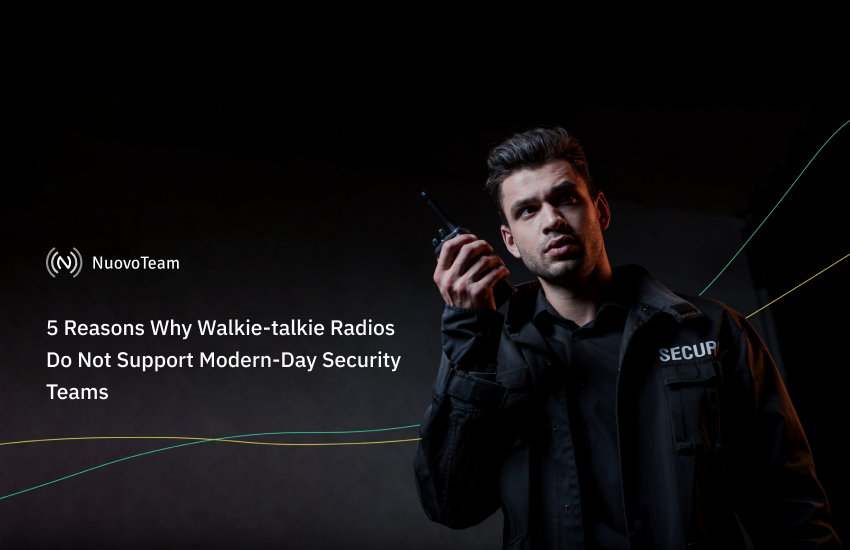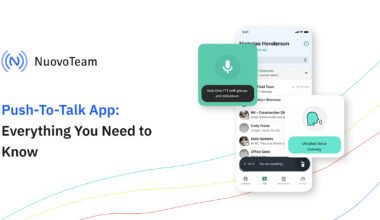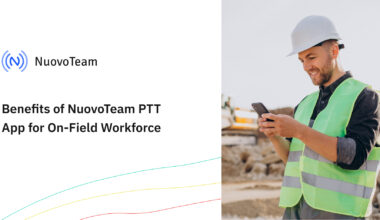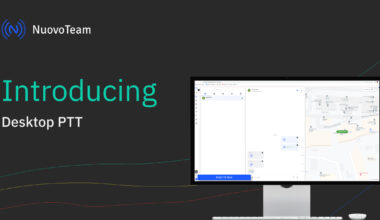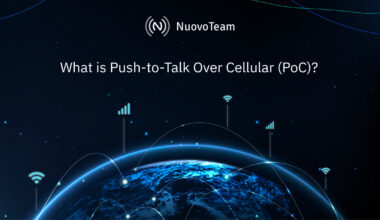Security teams are an indispensable part of the modern world. Be it protecting people, property or assets, having a strong security backup is essential today. Security guards, policemen, patrol guards, bodyguards, vigilance operators, etc. carry a massive responsibility of protection on their shoulders. With such high stakes, it is important for the governing authorities to pick the best tools to keep their servicemen well-informed and prepared to tackle any situation. This is where push-to-talk apps are gaining ground in the modern-day security scenario.
When it comes to modern modes of communication like phone calls or text messages, they fall short to deliver the speed and simplicity that is required by the security forces. When there are lives on the line, your communication needs to be flawless and failproof. This is why, in the old days, security and military agents relied on two-way radios like walkie-talkies. Radio communication, however, has failed to evolve with the rapidly evolving times and walkie talkie radios are no more feasible for use.
Walkie-talkie Radios: Technology of the Past
Walkie-talkie radios became extremely popular during World War 1 as the military used these radio devices exclusively for communication. Two-way radios introduced an ultra-fast and easy mode of communication that appealed to several industrial sectors, especially those with field and frontline workforces.
Frontline employees that work in time-critical situations could leverage quick communication with their crew members with just the push of a button. Walkie-talkies ushered in an era of quick and concise communication, unlike phone calls that required lengthy dialing processes and long formal conversations.
Walkie talkie radios enjoyed the limelight for quite some time before people began noticing the drawbacks in comparison to cellular communications. It is true that walkie talkie radio offers fast and hassle-free half-duplex communication. But, when compared to the slick smartphones that used cellular networks to offer high audio quality and global coverage, walkie-talkie radios began falling behind.
Also read: Can a smartphone be used as a Walkie-Talkie?
Why Are Walkie-talkie Radios Incapable of Catering To Modern-day Security Teams?
What comes to your mind when you imagine a security guard, or a police officer? A person in uniform holding a walkie-talkie radio. It is hard to accept that radio devices are gradually becoming outdated. But why is that?
Here are 5 reasons why walkie talkie radios cannot support modern security teams:
1. Poor Quality Audio
No matter where a security agent is deployed, the primary responsibility remains that of ensuring protection. It is extremely crucial that the security workforce communicates seamlessly with the crew members. Offering physical protection is a sensitive affair and requires an impeccable team effort. Traditional walkie-talkies work on radio networks and offer poor call quality and severe static noise in comparison to cellular calls.
The inability to hear your crew members may lead to miscommunication and lack of coordination which can cause disastrous outcomes. Modern communication platforms that offer crystal clear audio quality are a must.
2. Easily Interceptable
Not just physical security, but data security is important too. Especially in an age where exchanging data has become so easy. Radio networks are open to all and can be easily intercepted, which is a big drawback when it comes to managing high-priority and high-sensitivity tasks of the security services.
All communication that happens between the security agents, headquarters, intelligence teams, etc. should ideally be encrypted to ensure no one eavesdrops on important details.
3. Range Limitations
When protecting larger properties or VIPs, security agents have to be dispersed at various locations and communicate with several teams at once. Walkie-talkie radios rely on line-of-sight communication to ensure connectivity. Even long-range walkie-talkies offer connectivity that is limited to a few hundred meters.
Modern-day security forces are required to constantly stay in touch with their crew members, managers, control centers, intelligence departments and several other distributed teams. In the age of global connectivity and 5G communication, having restrictions on coverage is a major drawback.
4. Bulky in Make
Back in the day, two-way radios were bulky units that could be worn in a backpack style. Since then two-way radios have evolved massively into dedicated walkie-talkie radios. Yet, when it comes to security services, agents need to move swiftly and be as hands-free as possible. Walkie-talkie radios are bulky devices that add to the inconvenience.
5. Non Scalable
Modern technology is all about scalability. Organizations don’t pick tools and technology unless they are scalable and futuristic. This is why many businesses refer to intranet examples when designing internal systems that can grow with team size and complexity. Walkie talkie radios are simple and easy-to-use dedicated devices that have a huge push-button for instant connectivity. But that’s about it. Modern-day communication is omnichannel. You need a communication tool that can help you to go beyond voice communication and share images, videos, files with a link tracking system and more. Sadly, walkie-talkies do not offer anything above two-way half-duplex voice communication.
NuovoTeam PTT: Extending Fast & Reliable Communication
If it weren’t for the immense drawbacks, walkie talkie radios would still be the preferred choice for security services. Technological advancements have made it possible to leverage the push-to-talk technology used in walkie talkie radio and integrate it into smartphones. We now have push-to-talk apps or walkie-talkie apps that can mimic the function of a walkie-talkie radio on your smartphone.
NuovoTeam is a push-to-talk app that allows you to turn your smartphone into a walkie-talkie. It is easy to set up, does not require expensive licenses and permissions and caters perfectly to the needs of modern-day security teams.
Here’s why the NuovoTeam PTT app is ideal for today’s security services:
- You can leverage push-to-talk over cellular connectivity which offers high-quality audio and no range limitations. You can connect with anyone, anywhere over 3G, 4G or WiFi networks with just the push of a button.
- You can call your team member 1-1, or create dedicated open or closed channels for group communication.
- NuovoTeam’s SOS channel allows you to communicate emergencies and crises with a specific closed group of people for faster response.
- Control centers can monitor the locations of their teams and make PTT calls to them directly from their desktop, laptop or any machine with a Chrome browser.
- You can share text messages, videos, images, and files to keep the rest of your team informed on the latest intelligence gained on the case.
Closing Lines
Walkie-talkie radios have been the champions of the past. They have catered to diverse security services and ensure quick and easy communication, something even today’s cellular phone calls cannot achieve. However, with time, radio communication is growing expensive in terms of investment and the results are non-satisfactory. Push-to-Talk apps like NuovoTeam are the way forward to help security services streamline their remote team communication.

